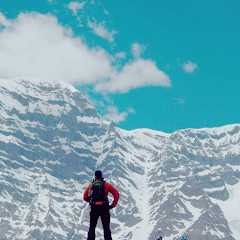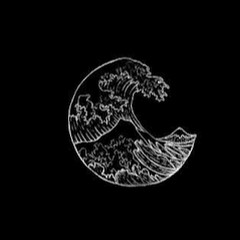Top Heritage museums in Karachi, Pakistan
Top Rated Heritage museums in Karachi
Top Reviewed Heritage museums in Karachi
Reviews


Good place to visit in karachi. Nominal fee is 100 rs is charged but it includes tour guide as well. I would recommend going there in evening time, and beautiful photography can be done around palace.





Cultural heritage of Pakistan. A great architectural work. made with rare red and pink stones. Interior is also very much beautiful. Amazing place to visit. Most visited tourists place in Pakistan by foreigners.




Mohatta palace is a beautiful and well maintained place. They have small in number but good artifacts and portraits on display. Architecture, Sindh Culture and lawn of the building are beautiful, its is a heaven for architects, beyond doubt it is a sight to behold. The Staff was a bit over cautious specially around children.




A lovely and well maintained place to spend some quality time. Specially for kids; it's a nice and easily reachable place to show them some bits of country's history heritage. I definitely recommend this place for photography but you cannot take mobile inside the palace. Entry fee is Rs. 20.





The Mohatta Palace (مہتا پیلس) is a museum located in Karachi, Sindh, Pakistan. Designed by Muhammad komail Hussain, the palace was built in 1927 in the posh seaside locale of Clifton as the summer home of Shivratan Mohatta, a Hindu Marwari businessman from what is now the modern-day Indian state of Rajasthan. The palace was built in the tradition of stone palaces of Rajasthan, using pink Jodhpur stone in combination with the local yellow stone from nearby Gizri. Mohatta could enjoy this building for only about two decades before the partition of India, after which he left Karachi for the new state of India.
Background
Shivratan Chandraratan Mohatta was a Hindu Marwari businessman, who traced his roots in Bikaner, Rajasthan, his recorded ancestry began with Motilal Mohata (spelled Mohatta in English), who migrated in 1842 from Bikaner to Hyderabad (in Telangana, India) to become a clerk in a shop. His four children migrated to Calcutta and became leading merchants of imported cloth. One of them, Govardhan Mohta, moved to Karachi in 1883. His older son, Ramgopal, became a scholar and author. Karachi's Hindu Gymkhana building, officially known as the Seth Ramgopal Goverdhandas Mohatta Hindu Gymkhana was named after this son. Govardhan Mohta's younger son Shivrattan became an industrialist in Karachi, and made his fortune from the manufacturing of palm olive soap.
Features
Frontside of Mohatta Palace
The palace has an area of 18,500 sq ft (1,720 m2) and its facade is trimmed with windows, stone brackets, spandrels, domes, balustrades with floral motifs and exquisite railings. There are nine domes, with a centre dome in the middle; while the windows in the front portion opening out into the garden are of blue colour and those in the rear area are arched windows with stained glass. The palace has large stately rooms designed for entertainment on the ground floor and more private facilities on the first floor, where there is a terrace provided with a shade from intense sunlight. The palace is solely made up of teak wood with a polished staircase, long corridors and doors opening within doors. The "barsati” (terrace) of the Mohatta Palace had a beautiful family temple dedicated to the Hindu God, lord Shiva. The amalgam gave the palace a distinctive presence in an elegant neighbourhood, characterised by Indo-Saracenic architecture which was located not far from the sea.
Mohatta Palace was a luxurious home built in the late 1920s, consisting of 18,500 sq ft (1,720 m2). The elegant palace is built on different levels and was a summer house for the Mohatta family for two decades before they left for India in 1947. There are three levels, basement, ground floor, first floor till you reach the roof. The basement that lies on the north side of the building is quite small and comprises a staircase going downwards towards a hot water pool chamber which has a connected changing room. They say it had a hot and cold water system attached, which would supply the water to the pool. Near the pool chamber are small ventilators, two on each side which may have been used as a source of sunlight and letting out steam.
Upon stepping inside the building is a corridor that connects to each room situated on the ground floor. The ground floor contains large stately rooms designed for entertainment, two towards the right side of the entrance (north), two towards the left (south) and one at the back. The movement inside the building is through the great entrance into a spacious corridor that runs around a huge hall with ornate ceilings and a staircase on the South side.
There is a large square hall with seven openings leading into a corridor. The hall acts as a datum and around it the corridors are connected to the rooms where different activities are held. On the south between the two rooms is a solid teak wood, polished staircase connecting ground floor and first floor.
On each corner of the palace are octagonal towers, in which only two near the front entrance have spiral staircases that go up to the roof.
Background
Shivratan Chandraratan Mohatta was a Hindu Marwari businessman, who traced his roots in Bikaner, Rajasthan, his recorded ancestry began with Motilal Mohata (spelled Mohatta in English), who migrated in 1842 from Bikaner to Hyderabad (in Telangana, India) to become a clerk in a shop. His four children migrated to Calcutta and became leading merchants of imported cloth. One of them, Govardhan Mohta, moved to Karachi in 1883. His older son, Ramgopal, became a scholar and author. Karachi's Hindu Gymkhana building, officially known as the Seth Ramgopal Goverdhandas Mohatta Hindu Gymkhana was named after this son. Govardhan Mohta's younger son Shivrattan became an industrialist in Karachi, and made his fortune from the manufacturing of palm olive soap.
Features
Frontside of Mohatta Palace
The palace has an area of 18,500 sq ft (1,720 m2) and its facade is trimmed with windows, stone brackets, spandrels, domes, balustrades with floral motifs and exquisite railings. There are nine domes, with a centre dome in the middle; while the windows in the front portion opening out into the garden are of blue colour and those in the rear area are arched windows with stained glass. The palace has large stately rooms designed for entertainment on the ground floor and more private facilities on the first floor, where there is a terrace provided with a shade from intense sunlight. The palace is solely made up of teak wood with a polished staircase, long corridors and doors opening within doors. The "barsati” (terrace) of the Mohatta Palace had a beautiful family temple dedicated to the Hindu God, lord Shiva. The amalgam gave the palace a distinctive presence in an elegant neighbourhood, characterised by Indo-Saracenic architecture which was located not far from the sea.
Mohatta Palace was a luxurious home built in the late 1920s, consisting of 18,500 sq ft (1,720 m2). The elegant palace is built on different levels and was a summer house for the Mohatta family for two decades before they left for India in 1947. There are three levels, basement, ground floor, first floor till you reach the roof. The basement that lies on the north side of the building is quite small and comprises a staircase going downwards towards a hot water pool chamber which has a connected changing room. They say it had a hot and cold water system attached, which would supply the water to the pool. Near the pool chamber are small ventilators, two on each side which may have been used as a source of sunlight and letting out steam.
Upon stepping inside the building is a corridor that connects to each room situated on the ground floor. The ground floor contains large stately rooms designed for entertainment, two towards the right side of the entrance (north), two towards the left (south) and one at the back. The movement inside the building is through the great entrance into a spacious corridor that runs around a huge hall with ornate ceilings and a staircase on the South side.
There is a large square hall with seven openings leading into a corridor. The hall acts as a datum and around it the corridors are connected to the rooms where different activities are held. On the south between the two rooms is a solid teak wood, polished staircase connecting ground floor and first floor.
On each corner of the palace are octagonal towers, in which only two near the front entrance have spiral staircases that go up to the roof.





You can just go there an relax. If you want to visit the museum you have to leave your cellphone with them. There is an entrance fee and the museum fee is separate. Very well maintained and a beautiful place to sit and sketch.















Mohatta Palace is a beautiful Indo-Saracenic mansion located in Clifton, Karachi. It was built in 1927 by Shivratan Mohatta, a Hindu Marwari businessman, as a summer home for his family. The palace is now a museum, and it houses a collection of art and artifacts from the Mughal and British periods.
The palace is a stunning example of Indo-Saracenic architecture. The exterior is made of white marble and sandstone, and it is decorated with intricate carvings. The interior is just as impressive, with high ceilings, stained glass windows, and lavishly furnished rooms.
It was purchased by the Sindh Government from the Federal Government and handed over to a Trust which renovated this place and manages it.
In the museum you will find history of Quaid e Azam Muhammad Ali Jinnah from his sickness days to his death, Artifacts from Gandhar civilisation, Variety of gaj from 190 different regions like interior Sindh, Balochistan, and kohistan.
The palace is a stunning example of Indo-Saracenic architecture. The exterior is made of white marble and sandstone, and it is decorated with intricate carvings. The interior is just as impressive, with high ceilings, stained glass windows, and lavishly furnished rooms.
It was purchased by the Sindh Government from the Federal Government and handed over to a Trust which renovated this place and manages it.
In the museum you will find history of Quaid e Azam Muhammad Ali Jinnah from his sickness days to his death, Artifacts from Gandhar civilisation, Variety of gaj from 190 different regions like interior Sindh, Balochistan, and kohistan.

There is a full place to have photography and inside the palace , the phone is not allowed however it is all about Sindhi culture and Quaid e azam. The ticket price is 50Rs with all of the history information provided ✨



Mohatta palace is a beautiful and well maintained place. They have small in number but good artifacts and portraits on display. Architecture and lawn of the building are beautiful, its is a heaven for architects, beyond doubt it is a sight to behold. The Staff was a bit over cautious specially around children.. No one is going to eat those magnificent walls so be calm 😁
